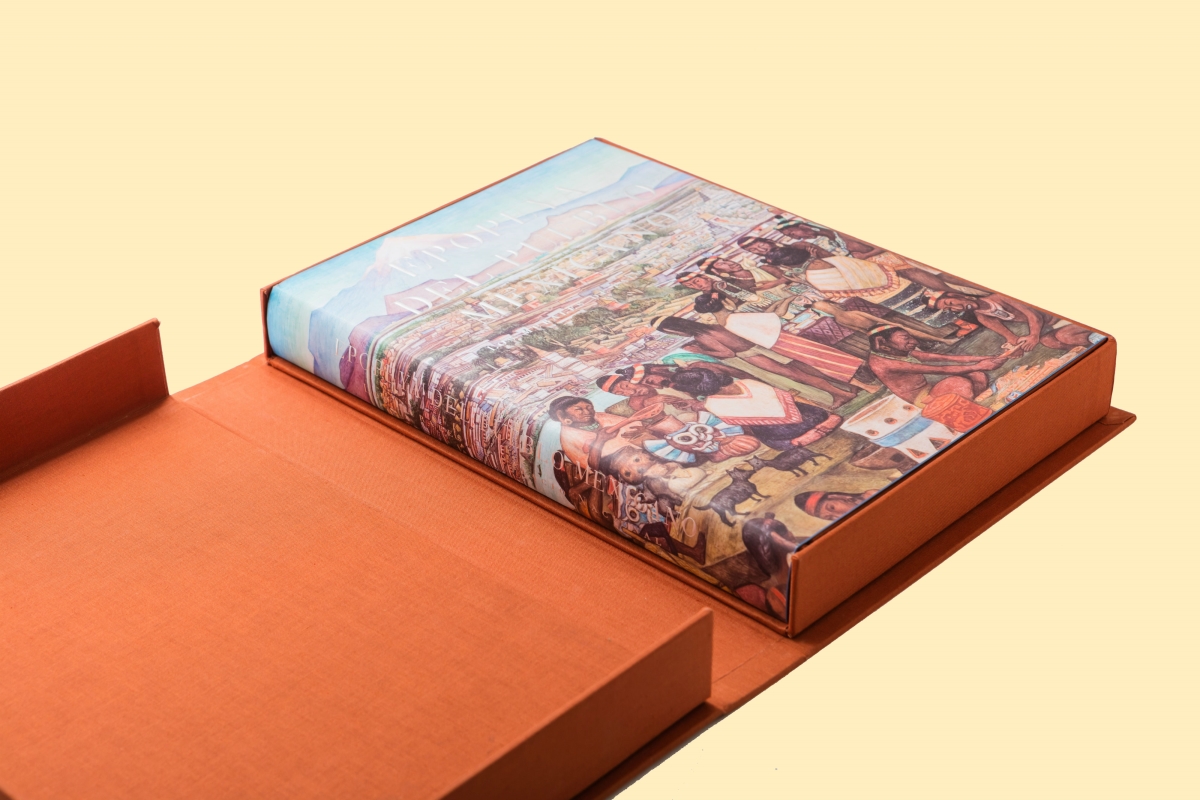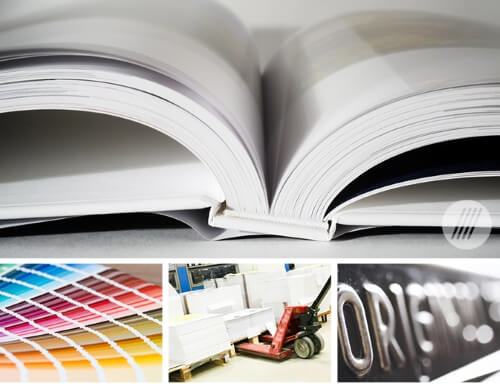Optimizing Files for CMYK Conversion in Your art book Prints
Optimizing Files for CMYK Conversion in Your art book Prints
Blog Article
Understanding the Refine Behind Top Quality Art Book Printing for Art Fanatics
When it pertains to premium art book printing, comprehending the intricacies of the process can boost your admiration for the end product. You could not understand how important paper option and ink options are to the vibrancy of art work. Each aspect plays a substantial function in attaining the desired result. As you explore the different parts of art book printing, you'll discover understandings that could transform your viewpoint on art preservation and discussion.
The Significance of Paper Option in Art Book Printing
When it involves art book printing, the choice of paper can make or break the end product. You desire your artwork to shine, and the best paper boosts shade vibrancy and information. Consider elements like weight, structure, and surface; these components substantially impact how readers view your work.
For circumstances, a larger supply shares top quality and resilience, while a textured coating can include deepness to photos. Smooth paper is superb for detailed reproductions, allowing fine lines and refined tones to show up crisp.
Do not ignore the paper's illumination; a brighter sheet can aid shades pop, making your art a lot more distinctive. You'll additionally desire to consider exactly how the paper engages with inks and whether it can manage the printing process without deforming or bleed-through. Ultimately, selecting the right paper establishes the phase for your art, ensuring it captures the audience's focus simply as you imagined.
Selecting the Right Inks for Dynamic Reproductions
Picking the ideal inks is equally as essential as selecting top quality paper to accomplish dynamic reproductions in your art book. When you're publishing artwork, you want shades that stand out and precisely stand for the initial piece. Select inks with a high pigment focus; these have a tendency to create richer and more saturated shades.
You may consider making use of archival inks, which stand up to fading in time, guaranteeing your art book stays as striking as the day it was published. If you're dealing with pictures or digitally developed art, pigment-based inks can offer a bigger color range, enhancing detail and deepness.
Don't neglect about the finish! Matte and glossy inks can significantly modify the appearance of your art work, so consider the appearance you're aiming to accomplish - art book. Inevitably, the best ink selection complements your paper option, creating a sensational aesthetic experience for your readers
The Function of Shade Management in Print Quality
Color monitoring plays an important function in attaining high print quality for your art book. It ensures that the shades you see on your display convert accurately to the printed page. Without reliable shade management, your dynamic art work might appear dull or distorted, weakening your imaginative vision.
Next, use color profiles tailored for your printer and paper type. These profiles guide the printer in reproducing colors accurately, reducing discrepancies between electronic and published versions.
When you prepare your documents, consider making use of a shade area like Adobe RGB or CMYK, depending upon your printer's specs. Always proof your work, too; a test print can reveal any kind of possible shade problems before the final run. By focusing on shade monitoring, you safeguard the honesty of your art, guaranteeing your target market experiences it as you intended.

Comprehending Different Binding Strategies
Achieving the perfect search for your art book goes beyond shade administration; binding techniques additionally play a significant role in its total presentation and durability. You have a number of options to examine, each with its own one-of-a-kind characteristics.
If you're going for a professional feeling, click here to read case binding uses a sturdy choice with a tough cover, ideal for showcasing your art work. On the other hand, best binding provides a versatile back while keeping expenses down, making it a popular option for softcover publications.
Spiral binding permits your art book to lay flat, which is wonderful for displaying pictures without blockage. Saddle stitching is ideal for smaller sized pamphlets, providing a tidy surface without the bulk.
Ultimately, the binding technique you choose must show your artistic vision and exactly how you desire viewers to engage with your work. Make sure to consider these choices meticulously to accomplish the very best outcome for your job.
The Effect of Publish Dimension and Format on Discussion
While the selection of print dimension and format might seem second to web content, they substantially affect just how your artwork is perceived. The measurements of your prints can either boost or lessen the effect of your pieces. Larger prints can attract customers in, allowing them to value complex information, while smaller formats might call for more intimate engagement.

Conservation Techniques for Durable Art Books
To guarantee your art publications stand the examination of time, it's necessary to apply reliable conservation techniques. Beginning by keeping them in a great, dry atmosphere, far from direct sunshine and moisture. This prevents fading and bending, keeping your web pages intact. Usage acid-free storage boxes or protective sleeves to shield them from dust and physical damage.
When managing your books, constantly wash your hands or wear cotton handwear covers to stay clear of oils and dirt moving onto the pages. Avoid flexing or wrinkling the backs; instead, make use of book sustains when showing them.
For included defense, consider buying archival-quality products for any repairs or enhancements. On a regular basis check your collection for signs of wear or damages, dealing with concerns without delay. By following these basic strategies, you can guarantee your art publications continue to be vibrant and available for several years ahead, preserving their appeal and worth for future generations.
Working together With Printers for Optimal Results
When you prepare to print your art book, picking the best printer is essential to accomplishing your vision. Clear interaction regarding your assumptions and needs will help guarantee that both you and the printer are on the exact same page. Let's discover exactly how to make this cooperation as seamless and effective as feasible.
Selecting the Right Printer

Efficient Interaction Strategies
Efficient interaction is essential for turning your art book vision right into fact, specifically when collaborating with printers. art book. Start by plainly detailing your job's goals, including layout elements, recommended products, and any particular printing methods. Don't hesitate to share your ideas and references; this helps the printer comprehend your aesthetic
Establish up regular check-ins to go over development and important source resolve any questions. Use visuals, like mock-ups or samples, to communicate your ideas much more efficiently. Be open to comments, as printers frequently have important understandings that can improve your job. Maintain a positive partnership by being respectful and satisfied of their proficiency. This partnership will ensure that your art book fulfills your expectations and shines in its final kind.
Often Asked Inquiries
What Prevail Errors to Prevent in Art Book Printing?
When printing your art book, prevent usual errors like inadequate resolution pictures, wrong color profiles, and neglecting page design. Do not fail to remember to proofread and ascertain information to confirm your last item satisfies your assumptions.
Just How Does Digital Printing Differ From Typical Printing Methods?
Digital printing utilizes digital files to develop prints directly, enabling for quicker turnaround and personalization. On the other hand, traditional approaches involve physical plates, which can be lengthy and much less adaptable for little runs or distinct layouts.
What Is the Common Turn-around Time for Art Book Printing?
The typical turnaround time for art book printing varies, but you can expect it to take anywhere from a few weeks to numerous months. Elements like complexity, quantity, and printing method all affect this timeline.
Can I Print a Minimal Version Art Book Economically?
You can print a restricted edition art book economically by selecting cost-effective products, maximizing print runs, and using electronic printing options. Mindful preparation and budgeting will certainly help you achieve quality without spending beyond your means.
What Are the Ecological Considerations in Art Book Printing?
When considering art book printing, you need to consider eco-friendly materials, lasting inks, and energy-efficient procedures (art book). Selecting local printers can also decrease your carbon impact, making your task both lovely and environmentally liable
Report this page